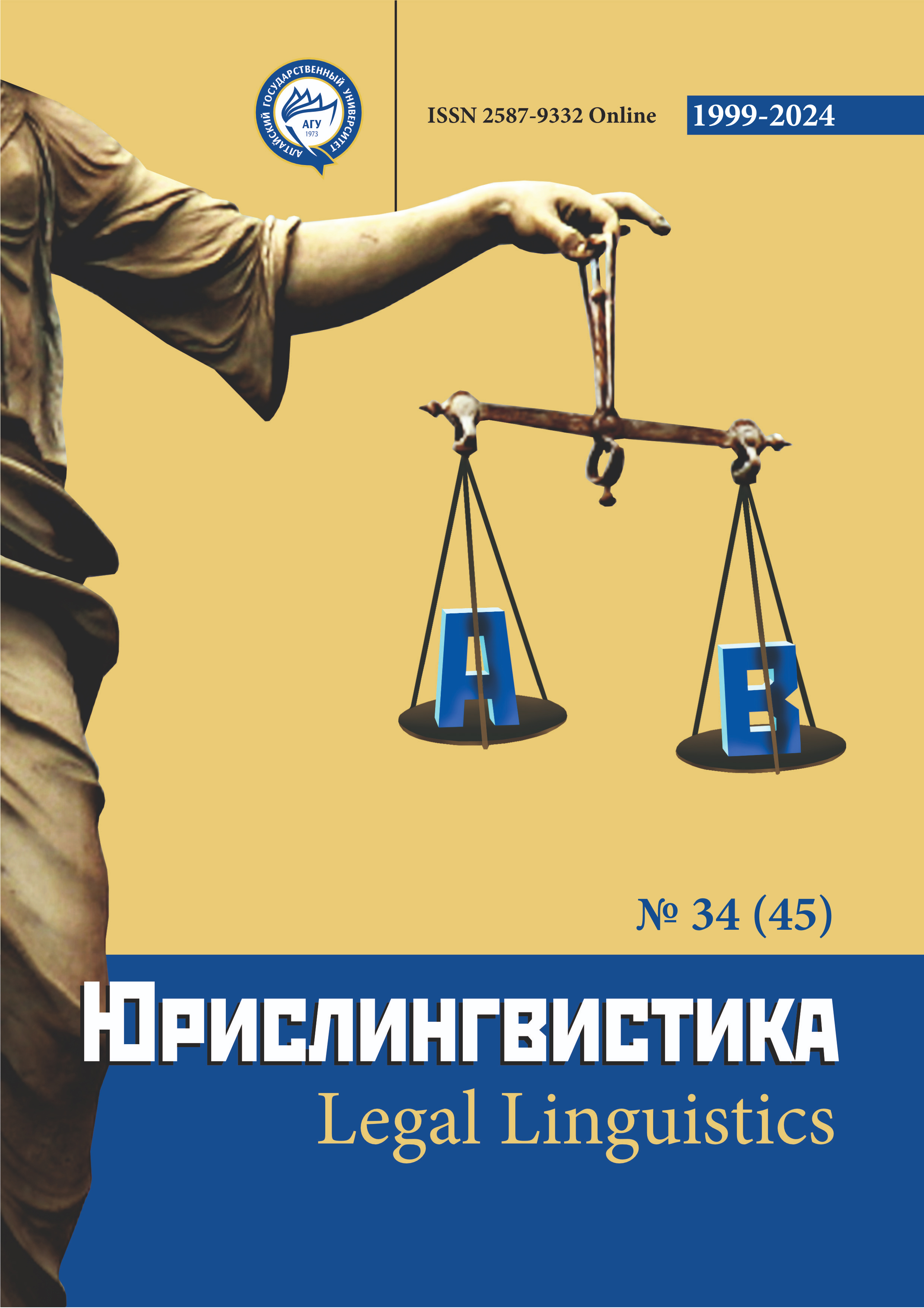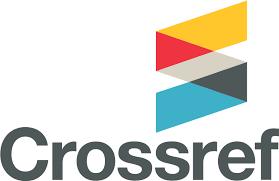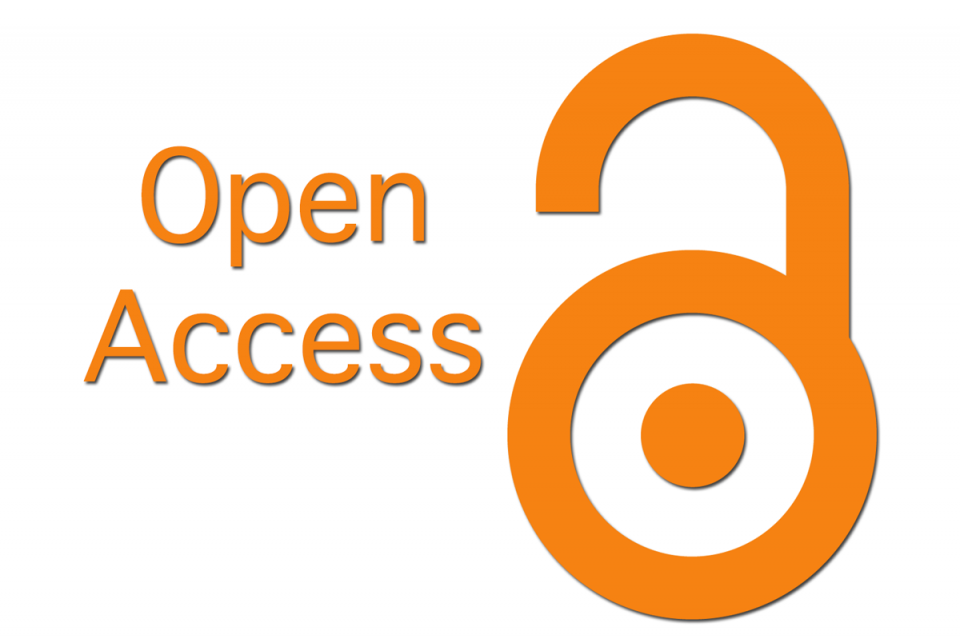Distinctive Features of Forensic Linguistic Examination of Modern Media Text
УДК 343.98, ББК 67.52
Abstract
The article explores the features of forensic linguistic analysis of media texts, which is one of the most popular areas of research in the field of linguistics and law. It proposes to consider forensic examinations of media texts as a specific type of expert research, whose specificity is due to the heterogeneous semiotic nature of media texts and the role of expert opinion as evidence in legal proceedings. This determines special requirements for media texts as objects of forensic analysis, as well as the methods and techniques used to analyze them, and the skills of linguistic experts needed to address issues related to establishing the form and content of statements in mass com-munication, which are sources of criminal information. The article also discusses the correlation between specialized philological (linguistic) knowledge and legal knowledge in the context of fo-rensic analysis of media text. The author draws attention to the specific nature of the Internet me-dia texts, which include both verbal and non-verbal elements, collectively forming a semantic ori-entation in the semiotic space of interactive communication. These texts can be seen both as prod-ucts (traces) of human activity, containing potentially valuable information, and as artificial texts generated by artificial intelligence technologies. The article emphasizes that specialized linguistic knowledge cannot be limited to interpreting the definitions of individual words in dictionaries. Instead, it requires an understanding of the nature of media texts, combining semiotically diverse elements into a unified semantic space. This understanding also involves the ability to address ex-pert issues using a multi-modal approach to analyzing heterogeneous codes (text, image, sound). It is concluded that it is essential to develop a new approach to training linguistic experts in the field of studying media texts of both natural and artificial origins.
Downloads
Metrics
References
Аяпова С. М., Скрипникова А. И. Медиатексты, созданные искусственным интеллектом и человеком: результаты эксперимента / Хабаршы. Журналистика сериясы. – 2022. – № 2(64). – С. 78-84.
Баранов А. Н. Лингвистика в лингвистической экспертизе (метод и истина) / Вестник Волгоградского государственного университета. Серия 2. Языкознание. – 2017. – Т. 16. – № 2. – С. 18–27.
Галяшина Е. И. Специальные методы судебной лингвистической экспертизы и экспертные фантомы (размышления после прочтения криминалистических работ Р. С. Белкина) / Теория и практика судебной экспертизы. – 2017. – Том 12. – № 3. – С. 33–39.
Галяшина Е. И. Судебная лингвистическая экспертиза. М., 2021.
Галяшина Е. И. Судебное речеведение. М., 2020.
Кузнецов В. О. Судебная лингвистическая экспертиза. М., 2021.
Кузнецова А. В. К определению понятия медиатекста / Известия высших учебных заведений. Северо-Кавказский регион. Общественные науки. – 2010. – № 5. – С. 141–145.
Кукушкина О. В. Методы анализа, применяемые в судебной лингвистической экспертизе / Теория и практика судебной экспертизы. – 2016. – № 1 (41). – С. 118–126.
Майоров А. П. Коммуникативная ситуация и конситуативное значение в конфликтогенном тексте / Юрислингвистика. – 2018 – № 7-8. – С.75-90.
Сергеич П. Искусство речи на суде. М., 2008.
Современный медиатекст: учебное пособие / отв. ред. Н.А. Кузьмина. Омск, 2011.
Тимофеева М. К. Интроспекция как предмет и как метод лингвистики / НГУ. Серия: История, филология. – 2010. – Том 9. – Выпуск 2. Филология. – С. 3-12.
Чернявская В. Е. Текст в медиальном пространстве. М., 2017.
Weiss M. Deepfake Bot Submissions to Federal Public Comment Websites Cannot Be Distinguished from Human Submissions. Technology Science. 2019121801. December 18, 2019. http://techscience.org/a/2019121801.
Copyright (c) 2024 Елена Галяшина

This work is licensed under a Creative Commons Attribution 4.0 International License.
The authors, which are published in this journal, agree to the following conditions:
1. Authors retain the copyright to the work and transfer to the journal the right of the first publication along with the work, at the same time licensing it under the terms of the Creative Commons Attribution License, which allows others to distribute this work with the obligatory indication of the authorship of this work and a link to the original publication in this journal .
2. The authors retain the right to enter into separate, additional contractual agreements for the non-exclusive distribution of the version of the work published by this journal (for example, to place it in the university depository or to publish it in a book), with reference to the original publication in this journal.
3. Authors are allowed to post their work on the Internet (for example, in a university repository or on their personal website) before and during the review process of this journal, as this may lead to a productive discussion, as well as more links to this published work (See The Effect of Open Access).











